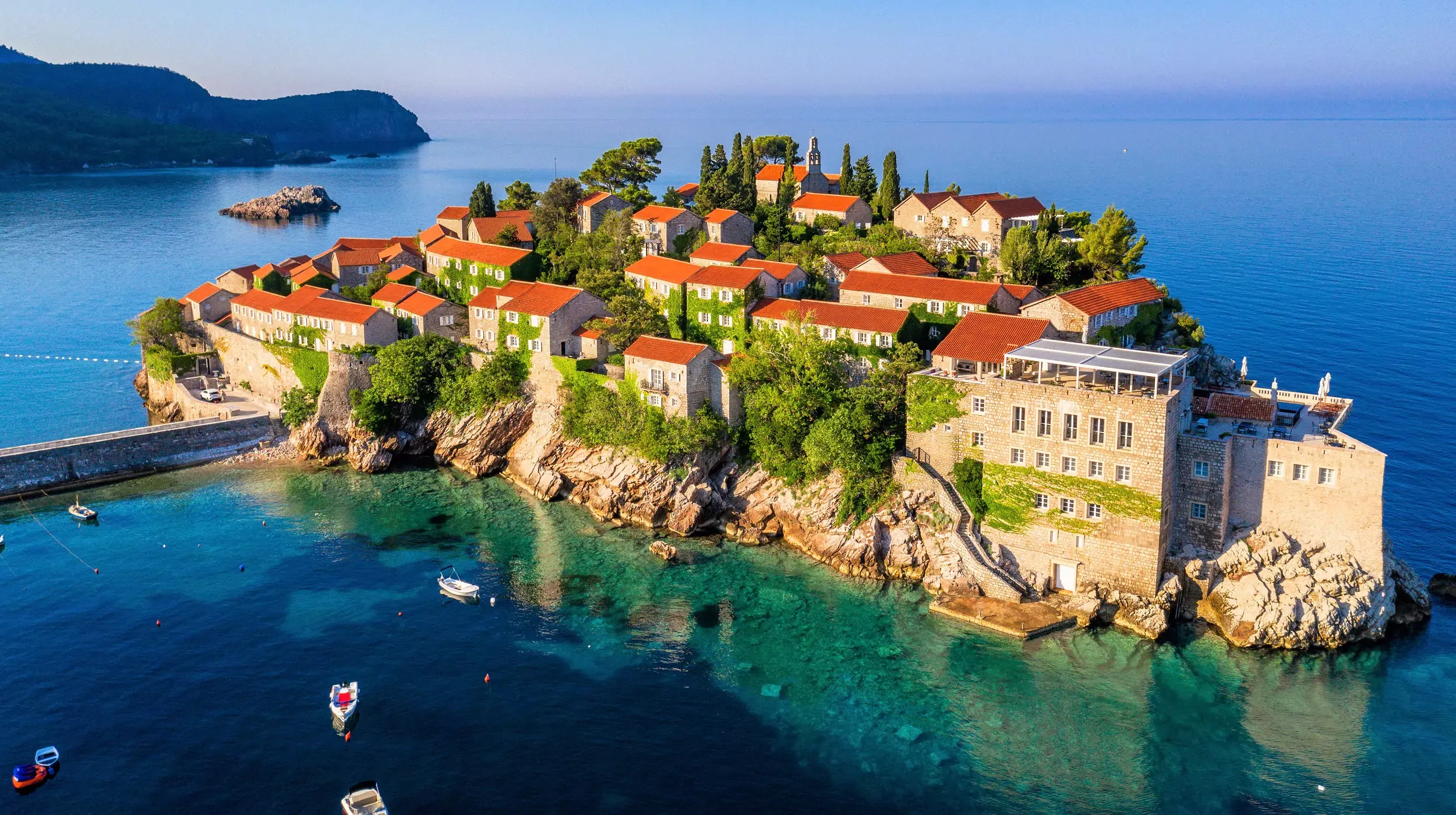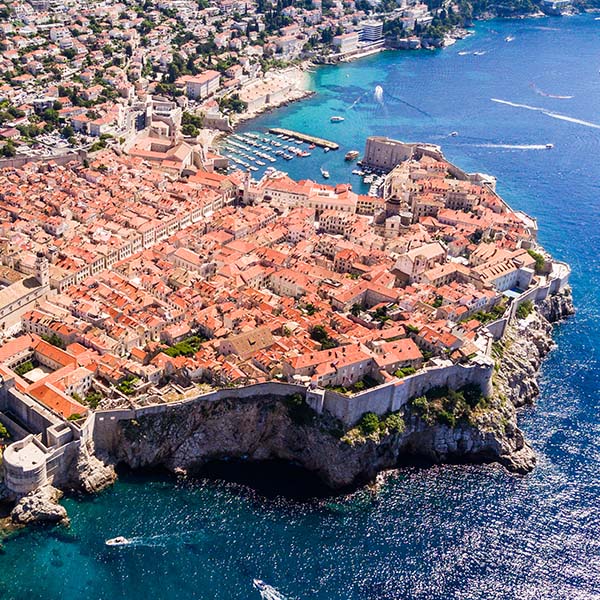A Journey Through the Adriatic Jewels: Croatia and Montenegro
Related Articles: A Journey Through the Adriatic Jewels: Croatia and Montenegro
Introduction
With great pleasure, we will explore the intriguing topic related to A Journey Through the Adriatic Jewels: Croatia and Montenegro. Let’s weave interesting information and offer fresh perspectives to the readers.
Table of Content
A Journey Through the Adriatic Jewels: Croatia and Montenegro

The Adriatic Sea, a shimmering expanse of turquoise and azure, cradles two stunning countries: Croatia and Montenegro. These neighboring nations, rich in history, culture, and natural beauty, offer a compelling blend of ancient ruins, vibrant cities, dramatic coastlines, and captivating landscapes. Whether you seek sun-drenched beaches, exhilarating adventures, or cultural immersion, Croatia and Montenegro provide an unforgettable travel experience.
Croatia: A Tapestry of History and Natural Splendor
Croatia’s Adriatic coastline is a breathtaking panorama of islands, inlets, and rugged peninsulas. Its history, deeply intertwined with the Venetian Republic and the Austro-Hungarian Empire, is evident in the charming medieval towns and fortresses that dot the landscape.
Exploring Croatian Cities:
-
Zagreb: Croatia’s capital, Zagreb, offers a vibrant blend of modern and historic attractions. The Upper Town, a UNESCO World Heritage Site, is a charming labyrinth of cobblestone streets, baroque churches, and the iconic St. Mark’s Church. The Lower Town, a bustling hub of shops, cafes, and museums, showcases the city’s contemporary spirit.
-
Split: Built around the magnificent Diocletian’s Palace, a UNESCO World Heritage Site, Split is a city steeped in history. Explore the palace’s ancient ruins, wander through the vibrant Riva promenade, and soak in the sun on the nearby beaches.
-
Dubrovnik: Perched on a dramatic cliff overlooking the Adriatic, Dubrovnik is a UNESCO World Heritage Site known for its fortified walls, stunning architecture, and charming Old Town. Take a leisurely walk along the city walls, explore the narrow streets, and enjoy the breathtaking views of the Adriatic.
Island Hopping and Coastal Delights:
Croatia’s islands are a paradise for nature lovers and adventurers. The most popular island destinations include:
-
Hvar: Known for its stunning beaches, lively nightlife, and picturesque lavender fields, Hvar Island offers a blend of relaxation and excitement.
-
Brac: Home to the iconic Golden Horn beach, Brac Island is renowned for its stunning natural beauty and picturesque villages.
-
Korcula: The birthplace of Marco Polo, Korcula Island is a charming destination with a rich history, quaint villages, and pristine beaches.
-
Mljet: A national park with two saltwater lakes, Mljet Island is a haven for nature lovers, offering hiking trails, kayaking opportunities, and pristine beaches.
Beyond the Coastline:
Croatia’s natural beauty extends beyond the coast. The Plitvice Lakes National Park, a UNESCO World Heritage Site, is a mesmerizing cascade of turquoise lakes, waterfalls, and lush forests. The Krka National Park, known for its stunning waterfalls and rich biodiversity, offers a captivating glimpse into Croatia’s natural splendor.
Montenegro: A Land of Untamed Beauty and Hidden Gems
Montenegro, a small but mighty nation, boasts a rugged coastline, towering mountains, and pristine lakes. Its history, marked by independence and resilience, has shaped its unique culture and vibrant spirit.
Coastal Marvels:
-
Budva: A charming coastal town with a rich history, Budva is known for its sandy beaches, lively nightlife, and ancient walls.
-
Kotor: Nestled in the Bay of Kotor, a UNESCO World Heritage Site, Kotor is a picturesque town with medieval walls, Venetian architecture, and stunning views of the surrounding mountains.
-
Herceg Novi: A charming town with a rich history and stunning natural beauty, Herceg Novi offers a blend of cultural attractions, coastal walks, and breathtaking views.
Mountain Adventures:
Montenegro’s rugged mountains offer a playground for outdoor enthusiasts.
-
Durmitor National Park: A UNESCO World Heritage Site, Durmitor National Park is home to the Tara River Canyon, one of the deepest canyons in Europe. Explore the park’s hiking trails, go rafting on the Tara River, or enjoy the breathtaking views from the mountain peaks.
-
Lake Skadar: The largest lake in the Balkans, Lake Skadar is a haven for birdwatchers and nature lovers. Take a boat trip on the lake, explore its islands, or go kayaking through its tranquil waters.
Cultural Treasures:
Montenegro’s rich cultural heritage is evident in its monasteries, museums, and traditional festivals. Visit the Ostrog Monastery, a Serbian Orthodox monastery carved into a cliff face, or explore the museums of Cetinje, the former capital of Montenegro.
The Shared Experience: Croatia and Montenegro Together
While Croatia and Montenegro offer distinct experiences, combining a trip to both countries can create a truly enriching journey.
Benefits of a Combined Trip:
- Diverse Landscapes: Experience the contrasting beauty of Croatia’s islands and coastline with Montenegro’s rugged mountains and pristine lakes.
- Cultural Immersion: Explore the rich history and culture of both countries, from Croatia’s medieval towns to Montenegro’s ancient monasteries.
- Adventure and Relaxation: Combine thrilling outdoor activities in Montenegro’s mountains with relaxing beach vacations on Croatia’s islands.
- Efficiency and Convenience: Explore both countries in a single trip, maximizing your time and budget.
Planning Your Adriatic Adventure:
Best Time to Visit:
The best time to visit Croatia and Montenegro is during the shoulder seasons, from April to May and September to October. The weather is pleasant, the crowds are smaller, and the prices are lower.
Transportation:
- Flying: Both countries have international airports, making it easy to reach from major European cities.
- Ferries: Ferry services connect Croatia’s islands and mainland, as well as Montenegro’s coastal towns.
- Car Rental: Renting a car is a convenient way to explore both countries at your own pace.
- Bus and Train: Bus and train services are available within Croatia and Montenegro, offering a more affordable option for traveling between cities.
Accommodation:
Croatia and Montenegro offer a wide range of accommodation options, from budget-friendly hostels to luxurious hotels. Consider staying in charming guesthouses, villas, or apartments for a more authentic experience.
Food and Drink:
Both countries boast delicious cuisine, influenced by Mediterranean flavors and local ingredients. Sample fresh seafood, grilled meats, and flavorful pasta dishes. Don’t miss the opportunity to taste local wines, especially the Croatian Plavac Mali and the Montenegrin Vranac.
FAQs about Croatia and Montenegro:
Q: What is the best way to get around Croatia and Montenegro?
A: The best way to get around Croatia and Montenegro depends on your budget and preferences. Renting a car is a convenient option for exploring both countries at your own pace, while ferries are ideal for island hopping in Croatia. Bus and train services are available for traveling between cities, offering a more affordable option.
Q: What are the must-see attractions in Croatia and Montenegro?
A: Croatia’s must-see attractions include Dubrovnik’s Old Town, Split’s Diocletian’s Palace, Plitvice Lakes National Park, and the islands of Hvar, Brac, and Korcula. Montenegro’s must-see attractions include Kotor’s Bay, Durmitor National Park, Lake Skadar, and the Ostrog Monastery.
Q: What are the best beaches in Croatia and Montenegro?
A: Croatia’s best beaches include Zlatni Rat (Golden Horn) beach on Brac Island, Stiniva Cove on Vis Island, and the beaches of Hvar Island. Montenegro’s best beaches include Sveti Stefan, Jaz Beach, and the beaches of Budva.
Q: What is the best time to visit Croatia and Montenegro?
A: The best time to visit Croatia and Montenegro is during the shoulder seasons, from April to May and September to October. The weather is pleasant, the crowds are smaller, and the prices are lower.
Q: How much does a trip to Croatia and Montenegro cost?
A: The cost of a trip to Croatia and Montenegro varies depending on your travel style and preferences. Budget travelers can expect to spend around €50-€70 per day, while luxury travelers can spend upwards of €200-€300 per day.
Tips for Traveling to Croatia and Montenegro:
- Learn a few basic Croatian and Montenegrin phrases: This will help you communicate with locals and enhance your travel experience.
- Pack for all types of weather: The weather in Croatia and Montenegro can be unpredictable, so pack for both warm and cool temperatures.
- Bring a good pair of walking shoes: You’ll be doing a lot of walking, especially in Croatia’s historic towns and Montenegro’s mountain regions.
- Research local customs and etiquette: Be respectful of local customs and traditions to avoid any cultural faux pas.
- Enjoy the local cuisine: Don’t miss the opportunity to try fresh seafood, grilled meats, and flavorful pasta dishes.
- Be prepared for crowds: The tourist season in Croatia and Montenegro can be busy, so book accommodation and tours in advance.
- Take advantage of free activities: There are many free things to do in Croatia and Montenegro, such as exploring the beaches, hiking in national parks, and visiting historical sites.
Conclusion:
Croatia and Montenegro, two Adriatic jewels, offer a captivating blend of history, culture, and natural beauty. From Croatia’s charming medieval towns and stunning islands to Montenegro’s rugged mountains and pristine lakes, these neighboring nations provide an unforgettable travel experience. Whether you seek sun-drenched beaches, exhilarating adventures, or cultural immersion, a journey through the Adriatic Sea promises a memorable and enriching escape.








Closure
Thus, we hope this article has provided valuable insights into A Journey Through the Adriatic Jewels: Croatia and Montenegro. We thank you for taking the time to read this article. See you in our next article!